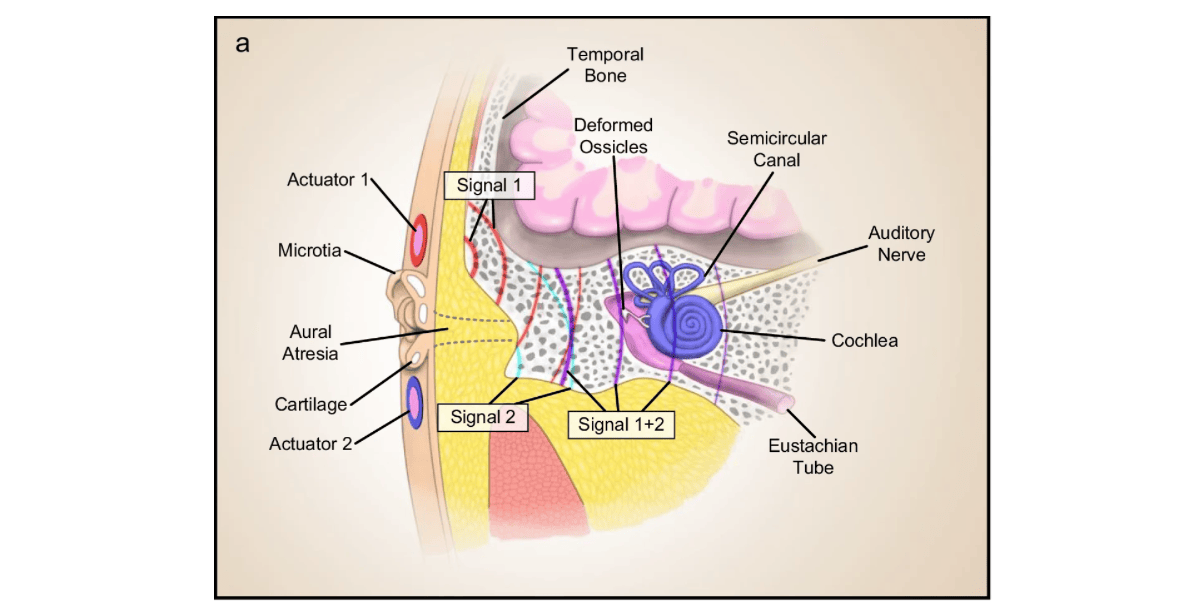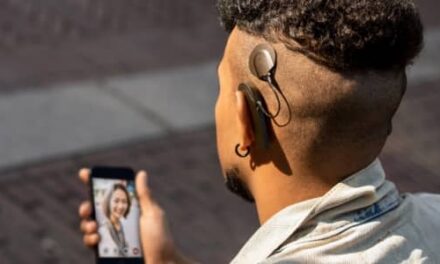Summary:
Researchers at Wake Forest University have developed a flexible, non-invasive hearing device that may offer an effective alternative to implantable aids and surgeries for treating conductive hearing loss.
Key Takeaways:
- The new device uses skin-mounted micro-epidermal actuators to transmit sound vibrations directly to the inner ear, bypassing blockages in the outer or middle ear.
- Arrays of these actuators significantly improve sound quality and vibration strength compared to single-unit designs.
- This innovation could be especially beneficial for children, offering a safer, less invasive solution that supports speech and educational development.
A study from researchers at Wake Forest University School of Medicine in North Carolina highlights a new approach in addressing conductive hearing loss. A team of scientists, led by Mohammad J. Moghimi, PhD, assistant professor of biomedical engineering, designed a new type of hearing device that not only improves hearing but also offers a safe, non-invasive alternative to implantable devices and corrective surgeries.
The study recently published in Communications Engineering, a Nature Portfolio journal.
Conductive hearing loss, which most commonly happens in childhood, occurs when sounds do not reach the inner ear. Sound waves are blocked in the outer or middle ear due to ear infections, blockages, or structural abnormalities.
“Treatment for conductive hearing loss can include corrective surgeries and implantable hearing aids, which can be very invasive, especially for pediatric patients,” Moghimi said. “Flexible hearing aids offer a noninvasive alternative.”
To produce vibrations strong enough to reach the cochlea, the part of the inner ear responsible for hearing, the research team designed a flexible hearing device. The device uses micro-epidermal actuators to create vibrations on the skin behind the ear, which then travel directly to the inner ear, bypassing the ear canal.
For the study, 10 participants between the ages of 19 and 39 wore earplugs and earmuffs to simulate conductive hearing loss. Researchers then tested arrays of the actuators to enhance the vibration strength, improve the quality of sounds, and control the direction of the vibrations.
“We found that using an array of these actuators, rather than a single one, significantly enhances the strength and quality of the vibrations, leading to better hearing outcomes,” Moghimi said.
Moghimi also noted that improving hearing in children can reduce delays in language and speech development and boost educational development.
“This technology has the potential to improve the quality of life for children with hearing impairments and transform the way we approach pediatric hearing aids,” Moghimi said.
The research team will next focus on a larger study to further evaluate the efficacy and safety of the device in children and adults.
Featured image: Illustration of how researchers’ flexible hearing device works shows a horizontal array attached to a patient with aural atresia. Vibrational signals are generated by each actuator, constructively interfering with the bone to produce a stronger signal. The cochlea picks up the combined vibrations and transmits the auditory signal to the brain. Image: Wake Forest University School of Medicine, from study published in Communications Engineering.





